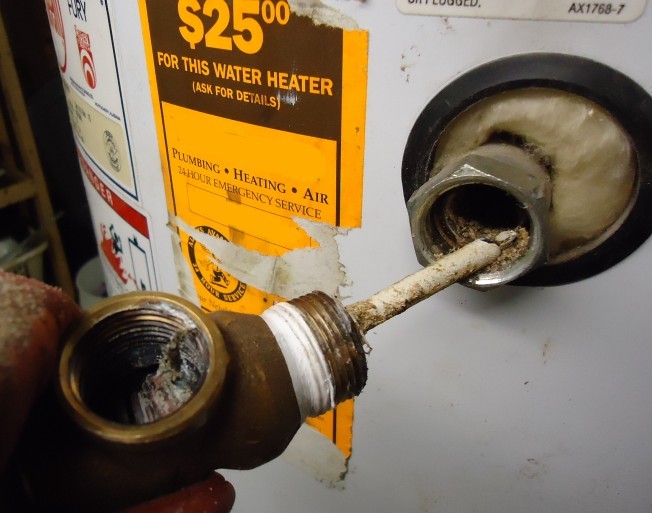Essential Maintenance Strategies for Your Home's Hot Water SystemImportant Advice on Maintaining Your Home's Hot Water System
Essential Maintenance Strategies for Your Home's Hot Water SystemImportant Advice on Maintaining Your Home's Hot Water System
Blog Article
How do you actually feel on the subject of What Kind of Maintenance Do Water Heaters Need??

Warm water is vital for daily comfort, whether it's for a revitalizing shower or cleaning meals. To ensure your warm water system runs effectively and lasts longer, regular upkeep is crucial. This write-up gives sensible ideas and understandings on exactly how to preserve your home's hot water system to avoid disturbances and expensive repair work.
Introduction
Maintaining your home's warm water system could appear difficult, however with a few simple actions, you can ensure it operates efficiently for many years to find. This guide covers every little thing from recognizing your warm water system to DIY upkeep pointers and understanding when to contact professional aid.
Value of Preserving Your Hot Water System
Normal maintenance not only prolongs the lifespan of your warm water system however also guarantees it runs efficiently. Disregarding maintenance can result in decreased performance, higher power expenses, and even early failure of the system.
Signs Your Warm Water System Needs Upkeep
Understanding when your hot water system requires attention can protect against significant issues. Keep an eye out for indications such as inconsistent water temperature, weird noises from the heating system, or rustic water.
Flushing the Hot Water Heater
Flushing your hot water heater eliminates debris accumulation, boosting effectiveness and prolonging its life.
Monitoring and Replacing Anode Rods
Anode poles prevent rust inside the tank. Checking and replacing them when worn is crucial.
Complicated Issues Needing Professional Assistance
Instances include significant leaks, electric troubles, or if your water heater is continually underperforming.
Routine Specialist Maintenance Perks
Specialist maintenance can consist of comprehensive assessments, tune-ups, and ensuring compliance with safety and security standards.
Checking and Adjusting Temperature Setups
Adjusting the temperature setups makes certain optimal efficiency and safety and security.
DIY Tips for Maintenance
You can execute several maintenance jobs on your own to keep your hot water system in leading problem.
Checking for Leaks
Consistently evaluate pipelines and connections for leaks, as these can cause water damages and greater bills.
Comprehending Your Warm Water System
Prior to diving into upkeep jobs, it's handy to understand the fundamental elements of your warm water system. Normally, this consists of the hot water heater itself, pipelines, anode rods, and temperature controls.
Monthly Maintenance Tasks
Regular monthly checks can help capture small concerns prior to they escalate.
Evaluating Pressure Alleviation Valves
Checking the stress safety valve guarantees it functions correctly and avoids too much stress buildup.
Insulating Pipes
Insulating hot water pipes decreases warm loss and can save energy.
When to Call an Expert
While DIY maintenance is useful, some problems need expert know-how.
Final thought
Routine upkeep of your home's hot water system is vital for effectiveness, durability, and expense savings. By following these ideas and recognizing when to look for expert assistance, you can guarantee a reliable supply of hot water without unanticipated disturbances.
How to Maintain an Instant Hot Water Heater
Before tinkering with your hot water heater, make sure that it’s not powered on. You also have to turn off the main circuit breaker and shut off the main gas line to prevent accidents. Also turn off the water valves connected to your unit to prevent water from flowing into and out of the appliance. 2. When you’re done, you have to detach the purge valves’ caps. These look like the letter “T” and are situated on either side of the water valves. Doing so will release any pressure that has accumulated inside the valves while at the same time avoid hot water from shooting out and burning your skin. 3. When the purge valves’ caps are removed, you have to connect your hosing lines to the valves. Your unit should have come with three hoses but if it didn’t, you can purchase these things from any hardware or home repair shops. You can also get them from retail stores that sell water heating systems. Read the user’s manual and follow it to complete this task properly. When the hosing lines are connected, open the purge port’s valves. 4. You should never use harsh chemical cleaners or solutions when cleaning your unit. Make use of white vinegar instead. It should be undiluted and you’ll probably use about 2 gallons. 5. Now flush your water heater. This task should probably take about 40 minutes. We can’t give you specific directions for this because the procedure is carried out depending on the type, model and brand of your heater. With that being said, refer to the user’s manual. 6. When you’re done draining the unit, you have to turn off the purge port valves again. Remove the hosing lines that you earlier installed on each of the water valves. Put the valve caps (purge port) back in their respective places and be very careful so as not to damage the rubber discs that are found inside these caps. 7. Now that everything’s back in place, check your user’s manual again to find out how to reactivate your water heating system. 8. Once it is working, turn one of your hot water faucets on just to let air pass through the heater’s water supply pipes. Leave the tap on until water flows smoothly out of it. https://www.orrplumbing.com/blog/2014/september/how-to-maintain-an-instant-hot-water-heater/

I'm just very focused on How to Maintain a Hot Water Heater in a Few Simple Steps and I am assuming you appreciated the entire blog entry. Are you aware of somebody who is interested by the niche? Why not share it. Many thanks for being here. Please come by our blog back soon.
See Availability Report this page